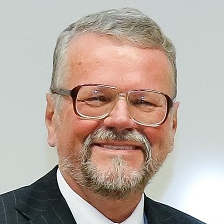Selected Papers from International Symposium on “Fuel Supply Chain” within ICCES2020
A special issue of Energies (ISSN 1996-1073). This special issue belongs to the section "F: Electrical Engineering".
Deadline for manuscript submissions: closed (15 December 2020) | Viewed by 1974
Special Issue Editors
Interests: process integration
Special Issues, Collections and Topics in MDPI journals
Interests: optimization; scheduling; process systems engineering; chemical engineering; operations research
Interests: smart supply chain; sharing economy; sustainability; energy system
Special Issues, Collections and Topics in MDPI journals
Special Issue Information
Dear Colleagues,
With the sharp increase in transportation demand, the construction of fuel supply chains has been thriving all over the world. This mini-symposium (Fuel Supply Chain of International Conference on Computational & Experimental Engineering and Sciences) aims to encourage researchers to develop highly-efficient methods for the management optimization of large-scale fuel supply chain systems. We invite investigators to contribute to this mini-symposium with original research articles addressing the recent advances and challenges in mathematical modeling and algorithms. The conference targeted a wide range of topics related to fuel supply chain systems, optimization methods, and management, in order to improve the planning, design, scheduling, and control of the fuel supply chain system. Some of the topics include:
Fuel supply chain system analysis
Pipeline scheduling optimization
Batch sequence and size
Pump scheduling optimization
Inventory management
Real-time scheduling
System reliability analysis
Highly-efficient method for large-scale issues
Interdisciplinary optimization method
Prof. Dr. Jiří Jaromír Klemeš
Dr. Pedro M Castro
Dr. Haoran Zhang
Guest Editors
Manuscript Submission Information
Manuscripts should be submitted online at www.mdpi.com by registering and logging in to this website. Once you are registered, click here to go to the submission form. Manuscripts can be submitted until the deadline. All submissions that pass pre-check are peer-reviewed. Accepted papers will be published continuously in the journal (as soon as accepted) and will be listed together on the special issue website. Research articles, review articles as well as short communications are invited. For planned papers, a title and short abstract (about 100 words) can be sent to the Editorial Office for announcement on this website.
Submitted manuscripts should not have been published previously, nor be under consideration for publication elsewhere (except conference proceedings papers). All manuscripts are thoroughly refereed through a single-blind peer-review process. A guide for authors and other relevant information for submission of manuscripts is available on the Instructions for Authors page. Energies is an international peer-reviewed open access semimonthly journal published by MDPI.
Please visit the Instructions for Authors page before submitting a manuscript. The Article Processing Charge (APC) for publication in this open access journal is 2600 CHF (Swiss Francs). Submitted papers should be well formatted and use good English. Authors may use MDPI's English editing service prior to publication or during author revisions.







